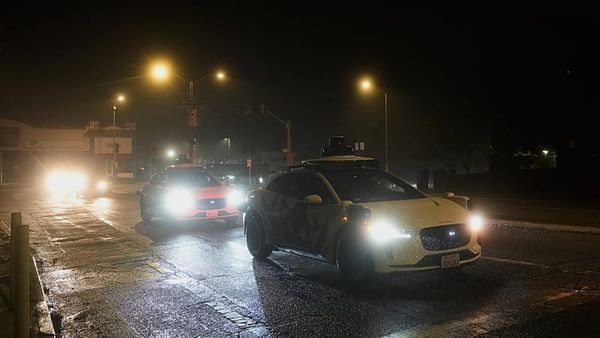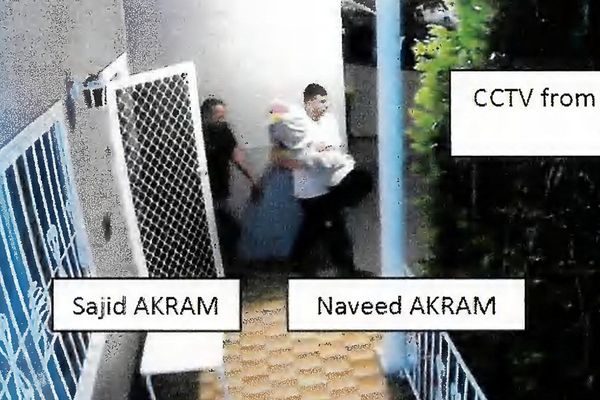
Affordable housing tenants on discounted rent in the Watermans Residences at Barangaroo are not permitted to use the swimming pool or the gym and are required to use a separate entrance from other residents, who pass through a grand glass foyer with a concierge desk.
Although they live in an enviable location just steps from the harbour and Crown casino, the restrictions are a daily reminder that the occupants of the 50 apartments designated affordable are not the same as those that occupy the other 162 units in the building known as One Sydney Harbour.
Common space for the residents is also restricted to a landscaped deck on level two and an indoor communal kitchen and dining area.
This is the New South Wales government’s affordable housing policy in action: a kind of apartment apartheid.
The Greens’ housing spokesperson, Jenny Leong, called the segregation at Watermans Residences “a dystopian microcosm of housing and wealth inequality”.
“The rich get the breezy upper stories with the view, pool and state-of-the-art amenities, while the poor are hidden away downstairs with a discreet entrance and no access to any of the facilities,” she said.
Sign up: AU Breaking News email
In the UK, which has long had policies to encourage affordable housing, separate entrances in multimillion-dollar blocks are known as “poor doors”.
The phenomenon has periodically caused outrage in the UK amid revelations that affordable housing and key worker tenants sometimes also have separate bicycle storage spaces, rubbish disposal facilities and postal deliveries.
It is the same in New York where, in 2014, the then mayor, Bill De Blasio, said he would take action to prevent new developments being built with separate entrances and facilities for low-income residents. It followed a furore over a luxury block on the city’s swanky Upper West Side that had a separate entrance for social housing.
Lendlease, which developed Barangaroo South, said it had included the affordable units in the rear tower at 55 Hickson Road as part of its project development agreement for Barangaroo, signed with the NSW government in 2010.
The agreement required that 2.3% of the residential gross floor area at Barangaroo South would be delivered as key worker housing on site, amounting to about 50 apartments.
This was before the NSW government’s more recent housing SEPP bonus, which gives developers up to 30% additional height and floorspace if they designate 10% to 15% of the units in a development as affordable housing. The units must remain as “affordable” – that is, 20% below the market rent – for 15 years.
“Sydney needs more diverse and affordable homes close to where people work to support our city’s future growth and productivity,” Tom Mackellar, the chief executive of development at Lendlease, said.
“Almost 25% of the apartments at Watermans Residences in Barangaroo South are for key workers, including locals working in education and medical frontline roles.
“All the apartments are fully occupied, showing demand is strong among those seeking secure, well-located and high-quality housing close to their workplaces.”
Sources said the pool restrictions led to issues for families with children, although the residents the Guardian spoke with were mainly just grateful to be living in a brand-new apartment in the city.
Janson from Indonesia, who is studying and working part-time as a cook, said it was the nicest unit he had found in the two years he had been in Sydney. He lives there with two other friends.
“I don’t care that much about the pool,” he said.
One young woman, an HR worker in the city who moved in three weeks ago, said her apartment was nice. But she lamented the lack of basic facilities, including supermarkets, in the area. “It’s really an area for tourists,” she said.
Lachie, 22, who lives in an affordable apartment with his girlfriend, said: “Yeah, we can’t get to the pool.” He said his girlfriend’s work with NSW Health got them discounted gym memberships at a nearby private gym, so the lack of access at Watermans was not an issue.
The key worker units are owned and managed by St George Community Housing and must remain below market rent for 20 years.
“Our affordable housing customers at this property pay 75% of market rent, which is significantly less than what they would pay in the private rental market,” a spokesperson for SGCH said.
“These homes offer secure, well-located housing for key workers and others who might otherwise be priced out of the communities they support.”
To be eligible for discounted rent at Barangaroo South, tenants cannot earn more than the annual income threshold of $100,875 for singles and $151,357 for two adults without children.
Lendlease said the key worker apartments were managed on a separate stratum from the private-market apartments, which allowed St George Community Housing to efficiently manage ongoing maintenance and operational costs while keeping rents more affordable.
The spokesperson for SGCH said: “While this may result in differentiated access to certain facilities, all residents benefit from high-quality housing and proximity to transport, employment and public amenities.”
The NSW minister for housing, Rose Jackson, noted that for this particular project the developer and community housing provider had entered into a private agreement to deliver affordable housing as part of the development. It was not a government-owned or managed building.
“With that said, I believe mixed-tenure developments shouldn’t make any resident feel like a second-class citizen,” Jackson said.
“Broadly speaking, our vision for mixed-tenure housing does not support different treatment for different types of residents. People shouldn’t feel stigmatised or excluded when living in mixed-tenure communities.”
Leong said successive governments had “outsourced the responsibility of housing delivery” to developers, giving them “more control over affordable housing”.
She said she was concerned the circumstances would breed “contempt toward affordable housing tenants”, allowing developers to “squeeze out maximum profits with minimum regard for the social impact of their actions”.
“Inclusionary zoning to deliver affordable housing is supposed to be a way to address inequity in our communities – ensuring everyone has access to housing in our city. It should not be a weapon for reinforcing socioeconomic hierarchies,” Leong said.
While the NSW government’s affordable housing policy requires owners of the affordable housing component to rent the units at least 20% below market rents, there are also income thresholds that tenants must not exceed.
With Sydney’s rents rising rapidly, it is difficult for anyone at the income threshold to pay the discounted rent for inner-city locations.
There was also the problem of how long a young person could stay in the key worker or affordable housing. One young teacher who the Guardian spoke to outside Watermans Residences said she would probably be ineligible for her unit if she got a pay rise next year; she had started living there in March.
“They should adjust the income requirements as they are too low,” she said.







